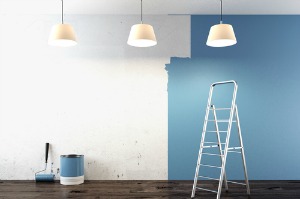Mysterious hole - help please!

A lick of paint: choosing your perfect shade
 Whether it's the kitchen that's lost its kick, or the spare room that's just not sparkling, re-decorating is just a B&Q trip away. But before you dig those paintbrushes out of the shed, you'll need to consider your colour palette, and this is a great opportunity to try out something a little different. Choosing the right shade of paint for your home doesn't have to be tricky. If you keep some simple tips in mind, you'll have no problem finding the most gorgeous grey, or the best shade of blue.
Whether it's the kitchen that's lost its kick, or the spare room that's just not sparkling, re-decorating is just a B&Q trip away. But before you dig those paintbrushes out of the shed, you'll need to consider your colour palette, and this is a great opportunity to try out something a little different. Choosing the right shade of paint for your home doesn't have to be tricky. If you keep some simple tips in mind, you'll have no problem finding the most gorgeous grey, or the best shade of blue.
5 tips for choosing paint colours
Mood: What is the feeling you'd like the room to capture? Is it a homey kitchen where warmth and good food are paramount, or is it a pristine dining room where elegant dinners are held? Even if you're only doing up the spare loo, it's important to think about the effect that a colour will have on the room. Warm tones generally make rooms feel cosy and relaxed, while cooler ones can give a more refined, undisturbed look.
Space: The amount of space in a room plays a big role in how different hues work in it. Larger spaces with high ceilings can get away with darker colours like forest green, chocolate brown, or deep burgundy, while smaller spaces would feel claustrophobic. If you've got a smaller room, or lower ceilings, lighter colours like soft cream, pale yellow, or a light coral are better for opening up the space and making it feel larger.

Light: Light is one of the most important elements to take into account when choosing a new shade of paint. If you're choosing a darker shade, whether it's taupe or navy, it's important to get a good idea of how the light will play in the room from morning to night. Be sure to test swatches of the paint you've chosen around the room to see how it does (or doesn't) reflect the amount of natural and man-made light.
Accents: If you'd prefer to freshen up a room without drifting too far away from its original look, consider adding accents in brighter, bold colours like yellow, blue, or red. An accent wall painted in a brighter colour can add much more dynamic look to the room when contrasted with a neutral shade, such as a single bold blue wall surrounded by pale grey.
Activities: Using a slightly darker shade for high traffic areas will help disguise marks, so whether defending against the grandchildren's seemingly magical ability to create small, smudgy handprints, or your partner's wonderous feats of cooking that involve splattering every available surface, the shade you choose - as well as the texture and durability of the paint - can make it last longer.
Image: Shutterstock